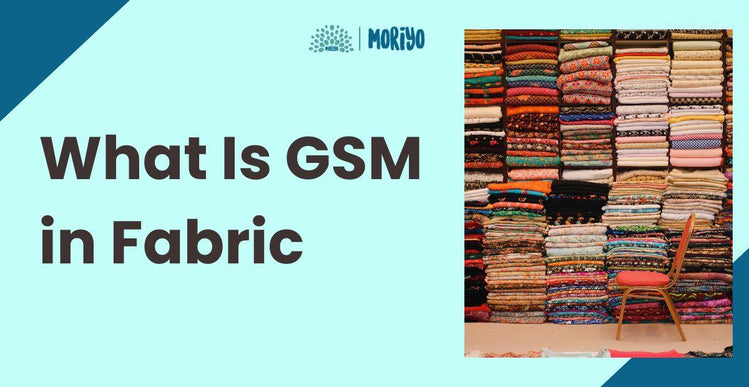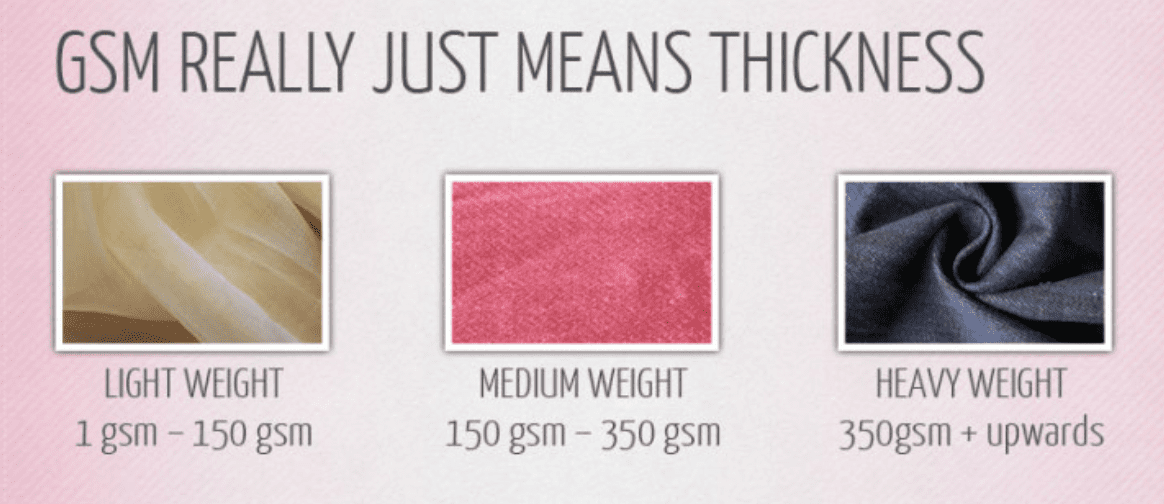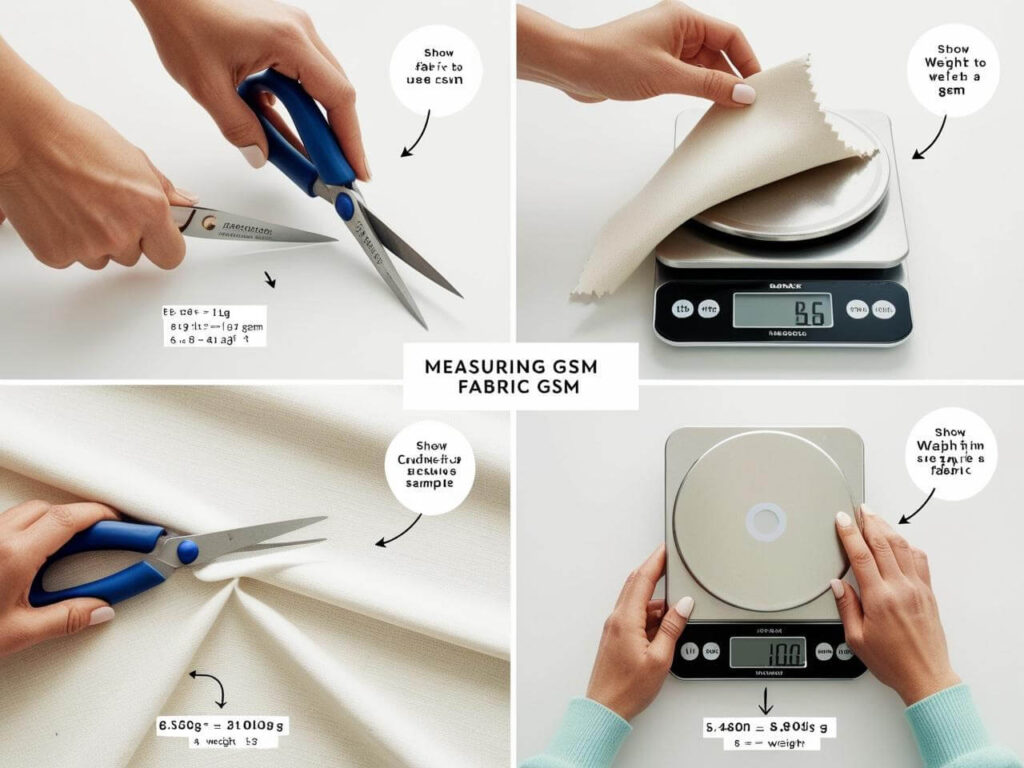GSM, or Grams per Square Meter, is a metric used to measure a fabric’s weight and density. It indicates how heavy a one-meter by one-meter square of fabric is.

Table of Contents
- What Does GSM Mean in Fabric?
- Why is Understanding Fabric GSM Important?
- How is Fabric GSM Measured?
- Fabric Weight Categories: A GSM Breakdown
- GSM vs. Other Fabric Weight Measurements
- How Does GSM Affect Different Types of Fabric?
- Choosing the Right GSM for Your Needs

What Is GSM in Fabric? A Comprehensive Explanation of Fabric Weight
When selecting textiles for clothing, upholstery, or accessories, you will often encounter technical specifications. One of the most crucial metrics is GSM. Understanding this measurement is key to deciphering the quality, feel, and suitability of a material for its intended purpose. It empowers you to make more informed decisions, ensuring the product you choose meets your expectations for performance and longevity.

What Does GSM Mean in Fabric?
GSM stands for Grams per Square Meter. It is a standard unit of measurement that defines the weight of a fabric. Quite simply, it is the weight in grams of a fabric sample that is one meter long by one meter wide. This measurement is a direct indicator of the fabric’s density. A higher GSM value means the fabric is denser, with more material woven into that square meter, making it heavier. Conversely, a lower GSM indicates a lighter, often more sheer, material.
Think of it as the fabric’s substance. A delicate silk scarf will have a very low GSM, while a rugged canvas duffel bag will have a very high one. This single number can tell you a great deal about a fabric’s potential texture, opacity, and durability before you even touch it.
Why is Understanding Fabric GSM Important?
Knowledge of GSM is invaluable for anyone who values quality. It moves you beyond relying on surface-level feel and provides a concrete metric for judging a material’s character. Its importance lies in how it directly influences several key attributes of a finished product.
First, it has a significant impact on durability and longevity. Generally, fabrics with a higher GSM are more robust. The dense weave is more resistant to snags, tears, and abrasion, making it ideal for items that endure heavy use, such as workwear, upholstery, or high-quality bags. A lower GSM fabric is more delicate and will require more careful handling.
Second, GSM determines the feel and drape of the material. Lightweight fabrics with low GSM are airy and flow freely, creating soft silhouettes perfect for summer dresses or curtains. Heavier, high-GSM fabrics have more structure and body. They hold their shape well, lending themselves to tailored jackets, structured trousers, and sturdy accessories.
Finally, it dictates a fabric’s suitability for different seasons and uses. Low GSM fabrics are breathable and excellent for warm weather, while high GSM fabrics provide insulation and warmth, making them perfect for winter coats and blankets. Understanding this allows you to select apparel that is not just stylish but also functional and comfortable for the environment in which it will be worn.
How is Fabric GSM Measured?
The process of measuring GSM is precise and standardized to ensure consistency across the textile industry. While it requires specialized tools, the method itself is straightforward. Manufacturers need an accurate measurement to maintain quality control and provide reliable specifications to consumers.
The standard professional method involves using a circular fabric cutter and a highly sensitive digital weighing scale. The cutter is designed to punch out a perfectly sized swatch of fabric, typically 100 square centimeters (100 cm²), which is exactly 1/100th of a square meter. This specific sample size simplifies the calculation.
Once the circular swatch is cut, it is placed on the digital scale, which measures its weight in grams. Because the sample size is 1/100th of a square meter, the weight recorded in grams is simply multiplied by 100 to find the GSM. For example, if the 100 cm² sample weighs 2.5 grams, the fabric’s GSM is 250 (2.5 x 100). This precise technique ensures that the weight is uniform and representative of the entire fabric roll.
Fabric Weight Categories: A GSM Breakdown
Fabrics are generally classified into three main weight categories based on their GSM value. This classification helps designers, manufacturers, and consumers quickly identify a material’s general characteristics and potential applications. Each category has distinct properties that make it suitable for specific types of products.
Lightweight Fabrics (Below 150 GSM)
Fabrics in this category are typically sheer, breathable, and have a delicate feel. They are known for their excellent drape and are often used in layers or for garments intended for hot climates. Their fine nature means they are less durable and may be slightly transparent.
- Characteristics: Airy, soft, often sheer, and quick-drying.
- Common Examples: Chiffon (20-40 GSM), Organza (40-60 GSM), Voile (60-90 GSM), light jersey for basic t-shirts (120-150 GSM).
- Typical Uses: Lingerie, scarves, blouses, summer dresses, and shirt linings.
Medium-Weight Fabrics (150 – 350 GSM)
This is the most versatile and widely used category of fabric weight. These textiles offer a perfect balance of durability and comfort. They are substantial enough to hold some structure but still flexible enough for comfortable everyday apparel. This range is often considered the standard for high-quality garments that need to withstand regular wear.
At Beldtura Leather, we appreciate the value of perfectly balanced materials. Just as our full-grain leather is chosen for its ideal thickness and strength, medium-weight fabrics are prized for their versatility and robust quality, making them an excellent choice for premium apparel and the durable linings of quality bags.
- Characteristics: Opaque, durable, and good for year-round use.
- Common Examples: High-quality T-shirts (180-220 GSM), Oxford shirts (170-220 GSM), French terry for sweatshirts (250-350 GSM), Poplin, and most denim.
- Typical Uses: The majority of clothing, including polo shirts, trousers, sweaters, and structured dresses.
Heavyweight Fabrics (Above 350 GSM)
Heavyweight fabrics are defined by their exceptional durability, structure, and warmth. These are dense, rugged materials designed for longevity and protection against the elements. Their stiffness allows them to hold a very defined shape, making them ideal for outerwear and items that require maximum resilience.
- Characteristics: Extremely durable, warm, often rigid, and highly abrasion-resistant.
- Common Examples: Heavy fleece (350+ GSM), heavy-duty canvas (400+ GSM), upholstery fabric, and raw selvedge denim (can exceed 500 GSM).
- Typical Uses: Winter coats, jeans, workwear, upholstery, and heavy-duty tote bags.
GSM vs. Other Fabric Weight Measurements
While GSM is the global standard, you might encounter another unit of measurement, particularly in the United States: ounces per square yard (oz/yd²). This imperial measurement serves the same purpose as GSM—to define fabric weight—but uses a different scale. It is especially common when discussing denim and canvas.
Understanding the relationship between the two is helpful for comparing materials from different suppliers. The conversion is straightforward, but it is important not to confuse the values, as they are numerically different. A higher number in ounces also indicates a heavier fabric, just as with GSM.
The direct conversion is: 1 ounce per square yard (oz/yd²) = 33.91 grams per square meter (GSM).
Here is a quick reference table for common weights:
| Ounces per Square Yard (oz/yd²) | Approximate Grams per Square Meter (GSM) | Common Fabric Type |
|---|---|---|
| 3.5 oz | 120 GSM | Light T-Shirt |
| 5.3 oz | 180 GSM | Standard T-Shirt |
| 8.0 oz | 270 GSM | Sweatshirt |
| 10 oz | 340 GSM | Light Denim / Canvas |
| 14 oz | 475 GSM | Heavy Denim |
How Does GSM Affect Different Types of Fabric?
The ideal GSM varies significantly depending on the fiber type and the intended use of the fabric. What is considered “heavy” for one material might be “light” for another. Knowing the typical GSM ranges for common fabrics helps set realistic expectations for quality and performance.
Cotton GSM
Cotton is incredibly versatile, and its GSM can range dramatically. A basic, inexpensive promotional t-shirt might be around 130-150 GSM. A premium, more durable t-shirt that holds its shape well after washing will typically be in the 180-220 GSM range. Cotton for sweatshirts and hoodies starts around 250 GSM and can go up to 400 GSM for heavyweight fleece. Cotton canvas used for bags can easily exceed 400 GSM.
Wool GSM
Wool’s weight is directly tied to its warmth and function. Fine wool used for tropical-weight suits might be as light as 200-250 GSM, making it suitable for year-round wear. A standard wool flannel for trousers or a blazer would be in the 270-350 GSM range. Heavy wool for winter overcoats needs to provide significant insulation, so it will often be 400-600 GSM or even higher.
Linen GSM
Linen is a naturally lightweight and breathable fiber, perfect for summer. Most linen fabrics for apparel fall in the 100-200 GSM range. A lighter GSM linen (around 120) will have a more open weave and a fluid drape, though it may wrinkle more easily. A heavier linen (around 180-200 GSM) will feel more substantial and less prone to excessive creasing, making it great for trousers and light jackets.
Choosing the Right GSM for Your Needs
Ultimately, the “best” GSM is not about finding the highest number, but about matching the fabric’s weight to its purpose. A high GSM is not inherently superior to a low one; a heavy winter coat made from a delicate, low-GSM fabric would fail in its function, just as a summer shirt made from a high-GSM canvas would be uncomfortable and impractical.
When you are making a purchase, consider the item’s intended use. Do you need a durable pair of jeans for daily wear? Look for denim over 12 oz (400 GSM). Are you searching for a breezy, comfortable t-shirt for a summer day? A premium cotton around 180 GSM would be ideal. Understanding fabric weight allows you to look past the marketing and evaluate a product based on the true quality and suitability of its materials.
This commitment to material integrity is the foundation of every product, whether it is a finely crafted leather good or a perfectly constructed garment. By paying attention to details like GSM, you ensure that what you buy is not only beautiful but also built to last and perform exactly as you need it to.

